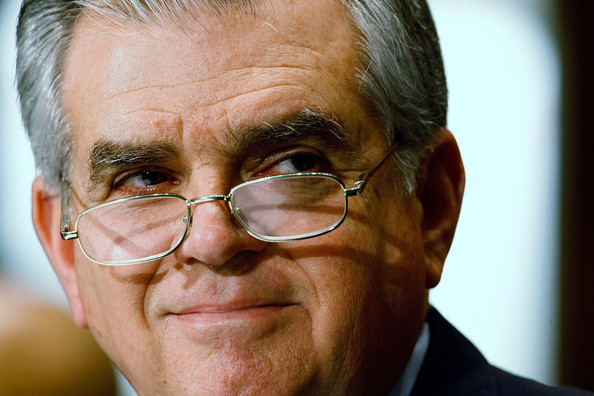Editor's note: Last month, Transportation Secretary Ray LaHood invited Streetsblog readers to submit questions for a Q&A installment on his blog, Fast Lane. Here are his answers.
In my "On The Go," series, I only get time to answer a few questions. But -- like the Streetsblog community -- I never get tired of talking about transportation.
And because Streetsblog readers came through with so many good questions for the May installment of "On The Go," I'm happy to answer more of those questions here on your home turf.
Jesse asks: What role does the government (at any level -- not just federal) have in changing the public's perception of the streets from a place that is the exclusive domain of cars to public space that should accommodate everyone's needs?
That's a terrific question, Jesse, because it covers a number of issues that are so important to the Streetsblog community. At the US DOT, we have said repeatedly that people on bicycles, people on foot, and people with disabilities are valued stakeholders in what happens with our roadways. At the federal level, we're providing leadership by making it clear that we support all modes of transportation.
And we've put our actions behind those words with grants for complete streets initiatives, better sidewalks, and more bike infrastructure like bike-sharing programs, bike lanes, and off-road paths. The Federal Transit Administration has made it easier for commuters to access transit service by bicycle. The Federal Highway Administration's Non-motorized Transportation Program has demonstrated that Americans want to use their feet to get where they're going.
I'm proud of our record of active support for all who use our roads.
But if you also believe we should make room for everyone on America's streets, there's plenty that you can do. Municipal and county leaders need to know how strongly residents want to incorporate bicyclists and pedestrians into transportation planning. And governors and state legislators need to know as well. The Streetsblog community can certainly help by continuing to educate these leaders and the public about the value of investing in non-motorized transportation.
Jeff aks: What can states do to help parents supervise their teens driving while they have their learners permits?
Although it may not seem like your kids are paying attention to you, the research tells us that teens listen to their parents. That’s why we encourage parents to talk to their children about traffic safety early and often, even before they reach driving age.

To help start the conversation, many states offer parent guides -- usually available online -- to help walk parents through the driving skills they need to convey to their young drivers. They also include sample parent-teen driver “contracts” that outline the rules and expectations of driving, and the consequences for violating those rules. Our own Distraction.gov website also has resources that can help parents talk to their kids about the dangers of distracted driving.
The research also indicates that -- whether they know it or not -- parents influence their children’s driving habits. So, above all, we ask parents to model safe, focused driving at all times.
And, ultimately, practice makes perfect. Parents should make time for supervised driving lessons with their teens. Supervised practices should take place for at least six months and continue even after a teenager graduates from a learner’s permit to a restricted or full license. Our kids know what we think is important by how we spend our time; and when we take the time to help our young drivers practice behind the wheel, we let them know that safe driving matters.
Once again, thanks to everyone at Streetsblog for submitting questions to “On The Go,” for watching and reading my responses, and for working to improve America’s transportation network. Please keep those questions coming!





